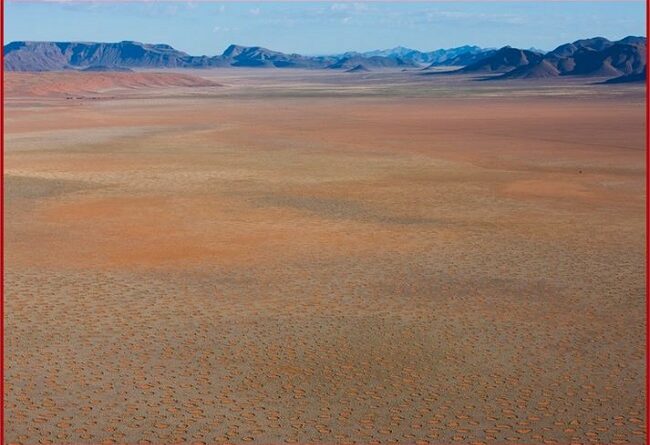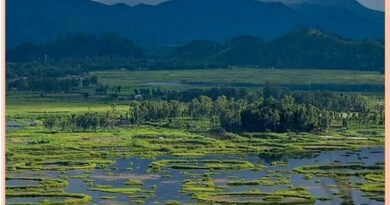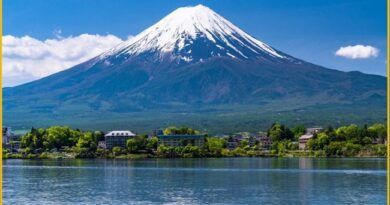The secret of Namibia’s ‘fairy circles’, Nature’s great mysterious structure

In Africa, the circles occur in a band lying about 160 kilometers inland and extending southward from Angola for some 2,400 kilometers down to the Northwestern Cape Province of South Africa. It is mainly a remote and inhospitable region, much of it over a hundred kilometers from the nearest village.
In local myths, says that fairy circle was created by gods who left behind their footprints on the red earth. But the formation of the circles has more to do with math and biology than folklore. Since “fairy circles” became the focus of scientific study, researchers have proposed a number of ways by which the bare discs of soil may form.
One research says that fairy circles are created by termites under the soil that clear vegetation in the area around their nests. By making the soil porous, the argument goes, they establish permanent reservoirs of rainwater 50 centimeters below the surface, which sustains them and the surrounding ecosystem.

An alternative idea is that the circles are explained by plants competing for water. Plants help their nearest neighbors by creating shade and maintaining water on the soil’s surface but hinder those further away by growing long roots that extract water from the soil.
The water competition theory hasn’t been proven by the many university research. Meanwhile, the termite theory is backed up by observations of termite nests in the circles, but couldn’t explain why the patterns are so regular.

Until 2014, the phenomenon was only known to occur in the arid grasslands of the Namib Desert in western parts of Southern Africa. in that year, ecologists were found similar rings of vegetation outside of Africa, which is a part of the Pilbara in Western Australia.
Also, read- One of the most unique landscapes on the planet- “The Water Pocket Fold” take an adventurous tour to another planet
Fairy circles typically occur in essentially monospecific grassy vegetation, where conditions are particularly arid. Associated grasses commonly are species in the genus Stipagrostis. Studies show that these circles pass through a life cycle of some 30 to 60 years.



